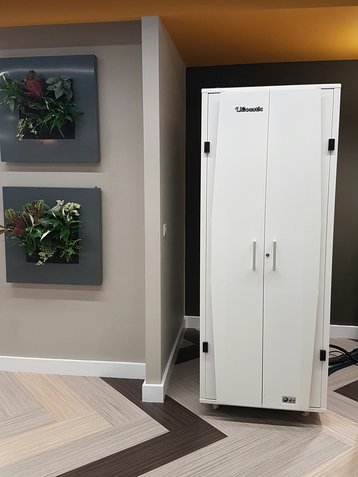Sometimes it is easy for the green-eyed monster to emerge and influence the way we think about our lives – both personally and professionally – we’ve all been there. In our sector, every CTO likes to talk about the number of transactions they must process, data they hold, or concurrent users and workloads that they need to support. It’s perfectly natural and one of the ways we all measure the significance of our role.
But where once I would often hear customers talk about the number of data centers, many are now talking about how they’ve got their data center waistline under control. Data centers come in all shapes and sizes, but all too often we think about them as large, even cavernous spaces, rammed to the hilt with servers and cooling equipment.
Cabinet in the corner
For decades, organizations with branches have had the ‘comms or server cabinet’ lurking in the corner of a room to support their connectivity and IT needs. But, with more computing power being squeezed into smaller spaces, and energy needs dropping, that cabinet has evolved into the micro data center (MDC).
Despite the move to centralized and cloud-based IT there are scenarios where localized, micro data centers make a great deal of sense. That said, they still require some serious thought to ensure they work well, especially if being used in multiple locations across a site. Here are my top tips for planning micro data centers:
- Workloads
Start by thinking about the workloads you need this new micro data center to undertake. How critical is it to business operations or does it need access to other IT infrastructure that should be in the same cabinet for performance? If there will be multiple workloads running, is there risk associated with them being in the same cabinet, if for example a power failure would occur what would the consequences be? You must also remember that the MDC may need to house its own UPS, which depending on the uptime it must maintain, could also take up valuable cabinet U space – has this been allowed for? - Cabinet distribution
It may be limitations on the buildings you operate from that have made the micro data center the right option for you. For example, installing any kind of data center on a site with listed status can be very complex, or impossible. MDCs can overcome this, but you must consider how you will interconnect if more than one micro data center is on site, for example across several floors or buildings. You may need to distribute units in a specific way to ensure resilience, for example not putting them in basements to avoid flood risk. Another consideration, particularly for listed buildings, is whether Wi-Fi is readily available? Well placed micro data center cabinets can provide the perfect opportunity to create a strong dead-spot free WiFi network for staff and visitors, that makes no changes to the physical structure of the building. - Cooling requirements
As anyone that works in an office will tell you, the temperature can vary wildly between seasons and even from one room to the next. This is not just a factor of the building, but whether staff open/close windows and adjust the temperature if they have the option. For MDCs this presents a unique challenge given the level of environmental control we are used to in larger DC settings. It is possible to get that same level of control, but during specification it is important to understand the environment the MDC will operate in and across what ranges. Also, what is the makeup of the air? It is possible that particulates from a manufacturing process may mean specialist filtering is needed as well as a well-managed maintenance regime. - Sound pollution
Think about who is going to be working near your micro data center and for how long. A cabinet may not seem very loud to you, but you are around that sound all day! For somebody trying to do a job where they need intense periods of concentration or perhaps make constant phone calls, the sound of active IT equipment can be both distracting and invasive. There are some fantastic acoustic cabinets on the market that can enable micro data centers to be used in environments where other people need to work, so don’t count them out because they need to go in an office. Often choosing the right cabinet can make all the difference.
MDCs can assist an organization in overcoming many challenges and the planning elements we have discussed above are all areas that any data center project manager worth their salt would need to consider.
The micro environment does require a different approach towards assessing risks, but that should not put anyone off considering these solutions. The technology has come on a great deal, and implemented well, you’ll soon be the envy of your peers.
Chris Wellfair is project director at Secure IT Environments


